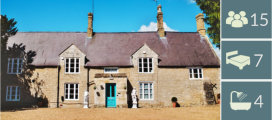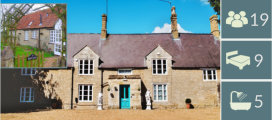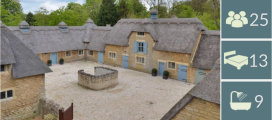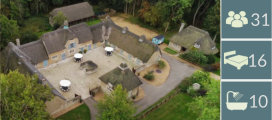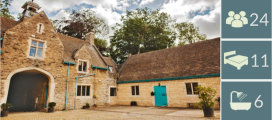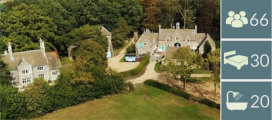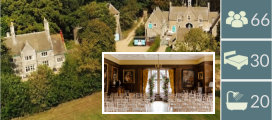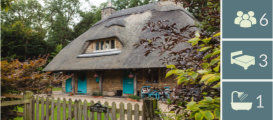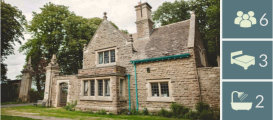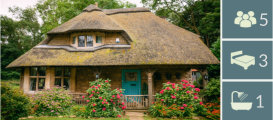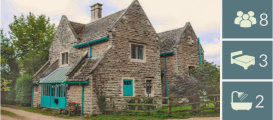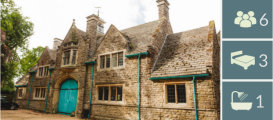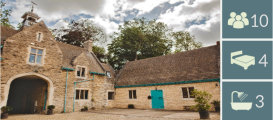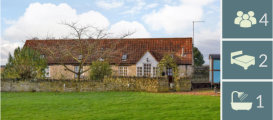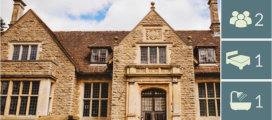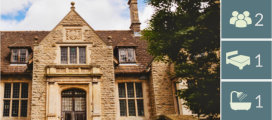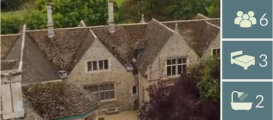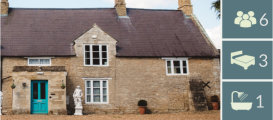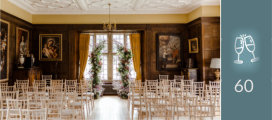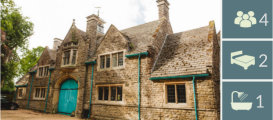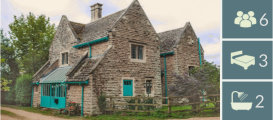BACKGROUND:
The Rothschilds, OHL limited and the Estate
OHL Ltd are the duly authorized agents for Holiday Lets on the CDL Sector of Ashton Estate for the Landowner, Dr Charles Daniel Lane.
Ashton is situated near to the charming market town of Oundle and is within a circa fifteen-minute drive from the A1 & A14 trunk roads. It is a short distance from Peterborough, Stamford, Corby and Kettering. Northampton and Cambridge are also within easy driving distance. Commuting to London from Peterborough, Corby or Kettering can be under one hour by rail.
No members of the Rothschild family reside on the Ashton Estate: thus, whilst the Estate lacks the focal point of a family occupied “big house” there is an egalitarian feel to the community. The Estate enjoys a variety of properties, from a five bedroom listed Manor House to two bedroom cottages – but there is, in our view, no pronounced social hierarchy. On the contrary, enjoyment of village and countryside seem to bind people into a neighbourly enclave with people from all walks of life living at Ashton.
At present we have 16 holiday houses available. See our Houses section for full details.


The Lady Rothschild Dairy
Formerly known as Ashton Wold Farm, The Lady Rothschild Dairy consist of three of the holiday houses and was constructed for Nathaniel Charles Rothschild in 1900-1901 and designed by William Huckvale. The farm was constructed as part of a new country estate envisaged by Charles Rothschild, within woodland which had been purchased by the Rothschild family in 1860. Charles Rothschild (1877-1923) worked as a partner in the family investment banking firm NM Rothschild and Sons, which was based in London, but is also known for his pioneering work in entomology and nature conservation.
The Lady Rothschild Dairy was designed as a dairy farm, with various buildings arranged around a courtyard and constructed of local building materials such as limestone and thatch, in Vernacular Revival Style. Constructed at the turn of the 20th century, when agriculture and farming in England were in decline, the complex was constructed as a ferme ornee. The complex comprises a U-shaped range of cow-houses around a central fold-yard with ancillary buildings including a detached dairy (The Sir Isaac Newt Library), in addition to a dove-cote (The Store), cart shed and cow-man’s cottage (Home Farm Cottage).
It is of exceptional architectural interest for the high quality of its design which reflects the vernacular building traditions of the region and for the level of craftsmanship evident in the working of the materials chosen for its construction. The buildings have been awarded Grade II* listed status.
Ashton and The Rothschild Family
The Rothschild family have a long association with Ashton in Northamptonshire. Here we present some random facts and anecdotes, many doubtless apocryphal and/or erroneous!
How did the Rothschild family become owners of the Ashton Estate?
Charles Rothschild (1877 – 1923) was an enthusiastic Natural Historian, and Scientist and a Merchant Banker. By repute, Charles was one of the most brilliant members of the family – and perhaps more interested in science than in banking. The Hon Charles Rothschild was passionate about insects – butterflies, moths, fleas and beetles (a passion inherited by his daughter, the Hon Miriam).
Apparently, Charles was enchanted by the Ashton Woodlands, with their abundant old sallow bushes and attendant Hair-streaks – rare butterflies whose larvae feed on ancient sallow. A variety of other butterflies inhabit these magical woodlands, including Fritillaries, and, allegedly, Purple Emperors. A Lepidopterist in possession of a good fortune is in need of a natural woodland, and Charles enquired of a local inn as to the owner of the Ashton Woodlands. The “Hon NCR” was dismayed to learn that the woods were owned by a family that (so it was said) rarely sells property and rarely needs to sell property.


The aspiring silviculturist and beetle enthusiast was less dismayed to learn that the family in question was the Rothschild family, and that the (indirect) owner was his father, Nathaniel Mayer Rothschild, (who had regarded the Ashton Estate as inconsequential and hardly worthy of note, despite the fact that the Estate then included significant areas of land now sold – alas, “how are the mighty fallen!”), and how erroneous are the comments of proprietors of local hostelries, with the exception of course of the proprietor of the Chequered Skipper.
The Skipper, (located in Ashton, by the Village Green, https://chequeredskipperashton.co.uk, an inn built (to a design attributed to William Huckvale) for Charles Rothschild, at the time perhaps the world’s most famous financier, was concerned with more important matters, such as the purchase on behalf of Queen Victoria of the Suez Canal: “Madam you have it!”
Some claim the above anecdote about Ashton is rubbish, a puff-piece, and a family myth. Nevertheless, it seems true that Charles Rothschild’s interest in Ashton focused on the flora, fauna and natural beauty of the Estate.
Bankers and Financiers, Artists and Scientists?
The Rothschild clan can be divided into those interested in banking and finance, and those interested in the arts and the sciences – with however many notable examples of overlap.
Perhaps regrettably, in terms of the physical fabric of the Ashton Estate, it is the scientific branch who have assumed the mantle of stewardship: and the scientists are not renowned for their financial prowess, or for their asset base. Among the arts and sciences branch, there has been a good run of “Firsts” from Oxford and Cambridge, and at the least – within the present generation – five first cousins who gained Oxbridge Firsts. Gaining only a “poor” First and the inability to obtain a PhD under the age of 23 seems to be the family definition of failure?! However, included amongst the members of the family with few academic qualifications are some of those with the most noteworthy academic and creative achievements.
For example, the Hon Miriam (who lacked a university undergraduate degree) and the Hon Victor (who gained a rather modest degree) both became renowned scientists, and Victor and Miriam are believed to be the only brother and sister to be contemporaneous Fellows of the Royal Society.


Bankers and The Ashton Estate?
Of course, the most able members of the family have tended to become bankers, financiers, and entrepreneurs: somewhat surprisingly, in view of the “clogs to clogs” dictum, several members of the present generation have proven to be very successful merchants and financiers – but that is another story, and does not concern the parochial goings-on at Ashton, a 19th Century backwater struggling to adapt to the 21st Century. The Ashton Estate is a delightful by product of the financial brilliance of the Rothschilds of the 19th Century.
How did the Rothschild’s define a rich man? A rich man was someone who could live comfortably on the income of his income. (This dictum has since been perhaps modified to a man who can live on the income of his inflation adjusted income.) The above is a rather interesting definition, because it incorporates elements of current happiness research including the idea that feelings of wellbeing are not linearly related to the amount of riches and vary between individuals. Thus, one type of person could live happily on the income of his real income, and another more materialistic type, would require a greater income to feel comfortable. As the saying goes, “What is the good of happiness, it can’t buy you money” and many members of the Rothschild clan seemed to have married for dynastic rather than emotional reasons, marrying cousins being a favourite past-time. For whom could be more eligible in terms of a dowry than a Rothschild! In fact, contrary to popular myth, the Rothschild’s were not one of the richest families in the world. Nonetheless, these Victorian entrepreneurs generated and retained sufficient riches to build country Estates of which the Ashton Estate is but one example. There are of course many more famous and more illustrious “Rothschild” Estates – see further information – in both France and in England and elsewhere in Europe.
“Fleas, Flukes and Cuckoos” and Other Parasites?
The Hon Nathaniel Charles Rothschild – the brilliant amateur scientist (1877-1923) – was very interested in fleas. Fleas are not only interesting but are also important – the Black Death (assuming it really was bubonic plague) was carried by bacteria within fleas (themselves carried on rats), and bubonic plague is still rife in certain parts of the globe. The modern-day plague of Myxomatosis is carried by fleas – rabbit fleas – but transmission by this vector is restricted primarily to temperate climates. In places such as Australia, transmission is in general by another insect vector – the mosquito. The plague flea “Xenopsylla Cheopis Rothschild” is named after Charles Rothschild.
The Hon Dr Miriam (Charles’ daughter) became a parasitologist and, amongst other achievements, perhaps the world’s greatest expert on fleas – and the author of that magnum opus “The Rothschild Collection of Fleas”. The Hon Miriam wrote “Fleas Flukes and Cuckoos” for the New Naturalist Series, one of the most popular volumes in this very popular series. Each chapter begins with a witty or pithy quote, such as “has the king of Israel came out to seek a single flea” – Samuel 1, 26:20.
The Estate is owned by the Rothschild family who take a keen interest in the efficient running of the commercial operations whilst maintaining the long-held family commitment to conserve the landscape and historic estate buildings.
In the video Dame Miriam Rothschild talks about herself and chooses seven of the things she finds most wonderful in nature as part of a BBC TV science series called ‘Seven Wonders of the World’, broadcast in 1995.

Rothschild Humour and Anecdotes
Several members of the family have enjoyed a ready wit: however, a number of bon mots ascribed to the Rothschild’s, may not actually have been of their creation.
Books on and by the Rothschild’s: in the event of financial Armageddon, family members could doubtless enjoy gainful employment by writing about………. the Rothschild’s. A Google search reveals a vast number of books (even a musical) on, or by, the Rothschilds. One book that appeals to the OHL Ltd team is: –
“The Rothschild Gardens”, Authors: Miriam Rothschild, Kate Garton, Lionel de Rothschild. Photographed by: Lionel de Rothschild, Andrew Lawson. One chapter has a humorous and informative account of life on the Ashton Estate, during the heyday of the Estate. Lionel de Rothschild has noteworthy academic credentials and the chapter on Exbury is well worth a read.
Further information resources on the Rothschild family are as follows:-
- The Rothschild Archive: www.rothschildarchive.org Much of the Archive is available on-line to everyone.
- The House of Rothschild by Niall Fergusson
- Rothschild Wines:
Chateau Lafite – www.lafite.com
Chateau Mouton Rothschild – www.mouton-rothschild.com - Waddesdon (The Waddesdon Manor Estate) – www.waddesdon.org.uk
- The Exbury Estate – www.exbury.co.uk
Refocus – Recharge – Relax
While our houses boast contemporary fixtures and amenities, we take pride in preserving the surrounding woodlands, wildflower meadows, and fields in their natural state. We prioritize maintaining a natural landscape that serves as a thriving ecosystem, providing a haven for an array of wildlife, from bugs and butterflies to foxes and badgers. Ashton Wold allows guests to connect authentically with nature, fostering a truly immersive and rejuvenating holiday experience. Guests have the opportunity to unwind, reconnect and immerse themselves in moments of joy, laughter, genuine connection with friends and family and rediscovering the simple joys often overlooked in their busy everyday lives.
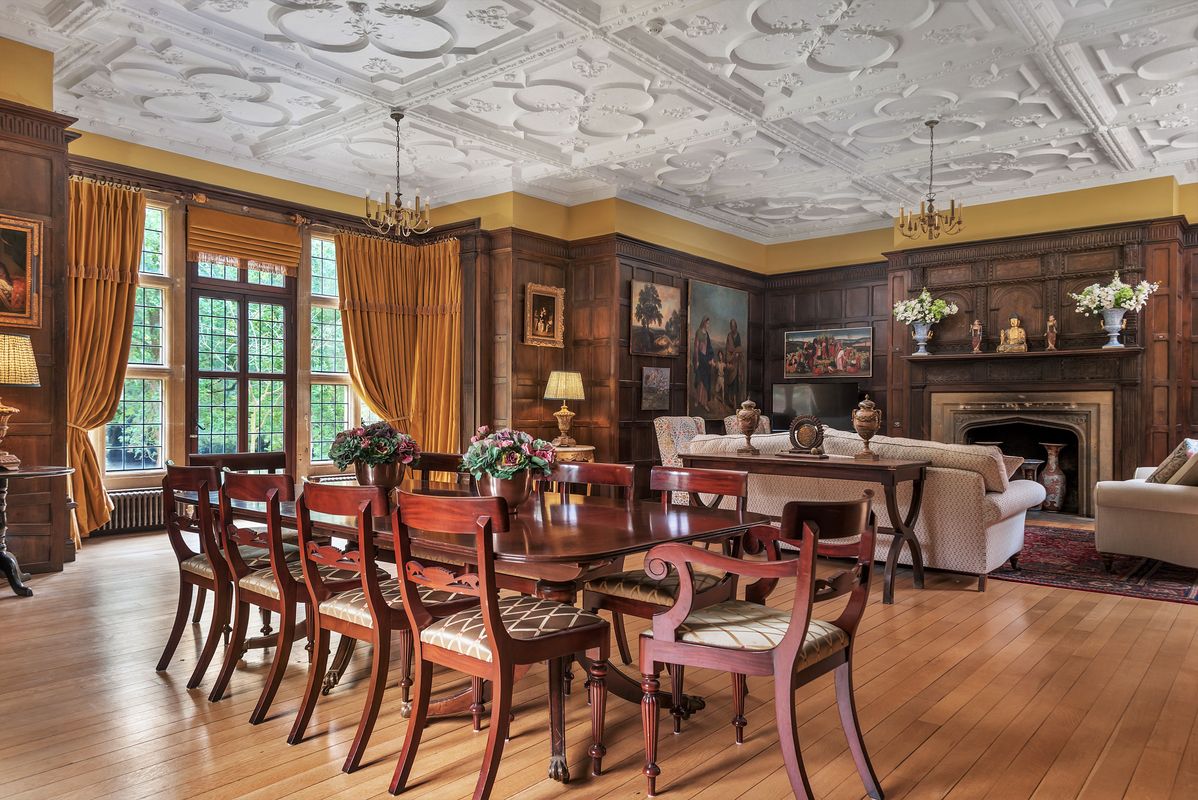

About OHL Limited
OHL Limited are mere advisors to the landowner of the Ashton Estate and have no authority legally to bind the landowner to any contract or to any agreement of any kind.
OHL Limited is primarily an asset management company with an emphasis on property management. Thus, OHL Limited is involved in the management of residential, commercial, and agricultural property. OHL Limited owns some property and is also directly involved in arable farming.
The Company is very small with all employees based at Ashton, but with access to a range of professional advisors including land agents, lawyers, accountants, and specialist letting agents.
Directors: Dr Charles Lane and Carol Maibaum
OHL Limited Registered Office: Cricket Pavilion, Ashton, Peterborough, PE8 5LF
Company Number: 1787160
VAT Number: 395 873685
OHL Limited Principles
- Safety: The hazards and risks that may affect people are of paramount importance. We request that you do a risk assessment before partaking in any activities on the Estate. OHL Limited do not replace emergency services and in the event of an accident / fire or other you must phone emergency services eg. 999 (emergency) or 111 (non life threatening)
- Legality: The Company strives to obey all laws and to formulate legally Compliant Leases and Contracts.
- People: The Company strives to treat people in a reasonable manner, whether client or employee.

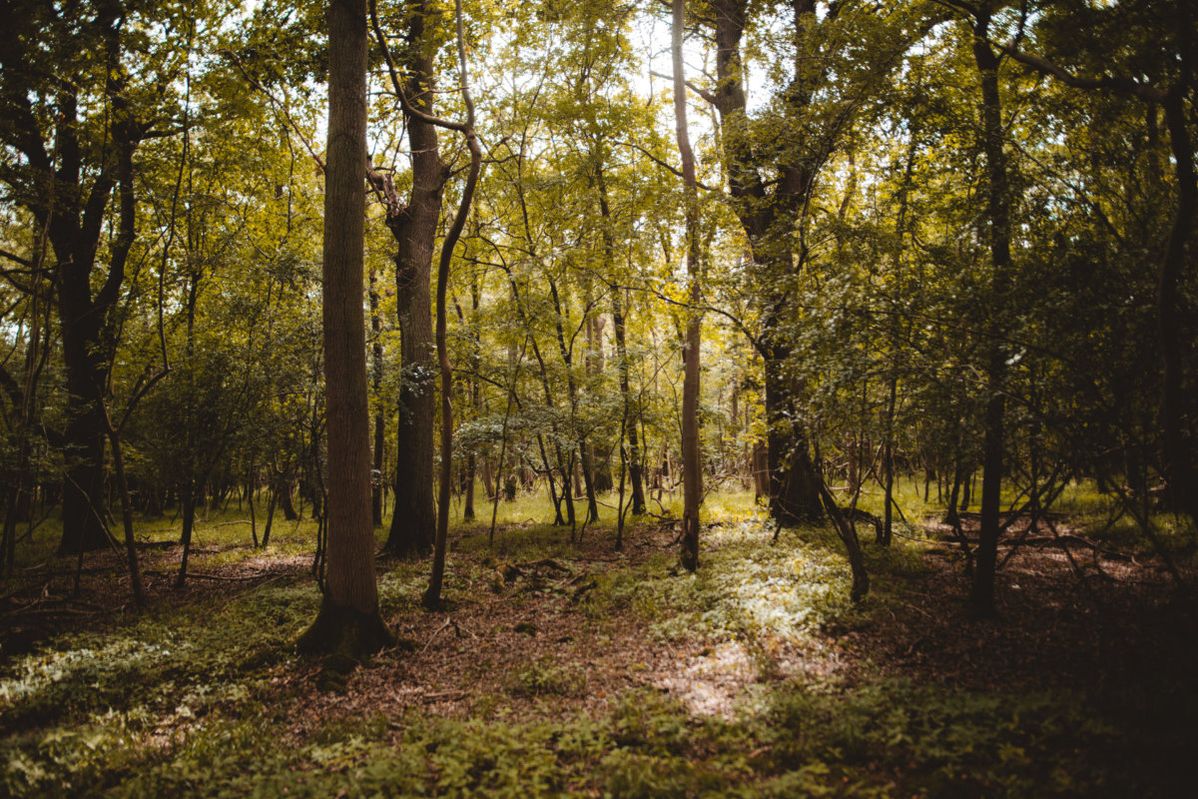
Higher Level Stewardship Scheme
Certain areas of the Ashton Estate benefit from inclusion in the Higher Level Stewardship scheme. The Proprietor gratefully acknowledges the support of the Environment Stewardship Scheme (part of the Rural Development Programme for England). Areas on the Estate that benefit from the scheme include parts of the Ashton Woodlands and their Site of Special Scientific Interest (the “SSSI”), various wildflower meadows, numerous field margins and selected copses.
Subject to the agreement and approval of Natural England, further information about the biological and ecological aspects of these Stewardship areas may be obtained from OHL Limited. OHL Limited expresses their gratitude to Natural England for their intellectual and monetary contribution to this important Conservation Programme.
More than just a bed for the night….
Included in your holiday stay is the overall holiday experience that Ashton Holidays has to offer – we don’t just offer you a bed to sleep in, we offer you an idyllic oasis perfect for spending time with friends or family.
The Estate offers an array of activities and extra services which include without limitation:
- Staff on hand 24hrs a day / 7 days a week
- Information packs
- Woodland Walk with themed shepherd huts
- Heritage Walks
- Den Building Area
- Clay pigeon shooting
- Archery
- Booklets re. the history of the properties and the Estate
- Art Galleries
- Charles Rothschild Walled Garden
- Farm Tours
- Table tennis, badminton, rounders, cricket etc
- The Green Room – Snooker games room * Please note some “extras” are subject to availability.
A visit to ashton can be more than a routine holiday
Holidaymakers on the Ashton Estate enjoy a level of service at the least equal to that of a small country Hotel. Thus, an incredible level of cleanliness, the provision of food, 24/7 service by staff who actually live on the Estate, and an attentive can-do attitude equal to hotel level service. However, an Ashton Holiday is much, much more than a passive sojourn in a nice hotel: few hotels offer clay pigeon shooting, outdoor ping pong, badminton, circa 29 Shepherd’s Huts (!) a child friendly woodland walk of linked shepherds huts, much natural beauty, some attractive Grade II and Grade I listed buildings and so forth.
Furthermore, for those involved in science, in nature conservation, in art, in Utopian visions and the enlightenment of modern society, there is something to learn from an Ashton Holiday.
The Hon Charles Rothschild had many brilliant ideas, one of which was that the key to the preservation of biodiverse species was the preservation of habitats, rather than focus on individual species. Thus, the Hon Charles was the father of nature conservation (creating a Rothschild list of key habitats). The Ashton Wold and especially the site of special scientific interest explores this vision, a vision continued by the Hon Miriam.
The Hon Charles was also a dreamer, but, by virtue of his incredible riches, was able to translate dreams into reality. The Ashton Estate was a mere bagatelle but was a forerunner of the Hon Charles progressive ideas as to the nature of the ideal society. Many of these ideas harmonize with those enjoyed by latter day scientists. Thus the Hon Charles envisaged full employment for the entire workforce, invested in effect a free medical service and vastly subsidized workers houses, indeed housing not only of reasonable quality but housing of exquisite amenity, with focus on large gardens, fruit trees and allotments for vegetable growing. Today one can buy one of these 3 bedroomed Ashton village labourers’ cottages for a mere £500,000 – (the family sold most of the Ashton Village, retaining merely three holiday residences – popular by virtue of their proximity to the pub? – and the Chequered Skipper pub itself. This gastropub supplies sustenance to holidaymakers).
The resulting “Ashton Model Farm Settlement” is beautiful of itself – most of the buildings survive, albeit with different uses (please see our holiday website OHL Limited: https//www.ohllimited.co.uk) – but is also of socio-economic intent. The Hon Charles was a kind of visionary – but a visionary with significant riches to create a real community.
The Rothschild family are alleged to be the richest business family ever to have existed. Rather bizarrely in its modern guise of farm plus holiday business, the Ashton Estate is economically self-sustaining, but in terms of area, is a mere shadow of its former self.
The more profound reasons for the Rothschild narrative being of interest is that Mayer Amschel Rothschild (1744 to 1812) “the founding father of international finance” and especially his son Nathan Meyer (and the other 4 Rothschild brothers) ushered in a new social order. As the writer Heinrik Ibsen wrote: “Money is the god of our time and Rothschild is his prophet”. The old order of wealth and power, based to a large extent on land and other property, was replaced by the new power based on financial liquidity, transactions and inherited finance. This was a real revolution, and heralded the modern era, replete with the merits and demerits of a new much less stable social order.
Paradoxically, the importance of the Rothschilds is obscured by their almost unbelievable riches. The Victorians could not thin of a Rothschild without also thinking about vast amounts of money. As the saying goes “As rich as Rothschild”. The real importance of The Rothschilds was that they were heralds of a new social order: the 42 stately homes (or Estates) scattered around Europe, and created by the Rothschild family, merely obscured the evolutionary nature of their achievements.
Ironically, most of the 42 Estates were, like Ashton, mere bagatelles, and nearly all were given to the relevant nation, or sold for some less grandiose use. It is rather unexpected, but the central portion of the Ashton Estate is one of the few Rothschild Estates still in private hands, possibly because Ashton was more than a plaything to the proprietors.
other information
- The historic Rothschild estate – although no attempt has been made to replicate the Ashton “Model Farm” the both luxurious and utopian concept to which the Hon Charles Rothschild (one of the richest men in England) aspired. Natural History was the over-riding passion of the Hon Charles, but Charles also inspired architect William Huckvale to create some beautiful buildings.
- Education: the amazing achievements of the “scientific” Rothschilds, all Charles associated with Ashton, educate young people in understanding of the life sciences. Particular emphasis is placed on the amazing discovery in the field of messenger RNA (think vaccinations) of present Estate owner, Charles Lane. The achievements of Dr Miriam Rothschild are also highlighted, and the Miriam Manor Hotel will be a tribute to this remarkable scientist.
- Value for Money. We argue that an Ashton Holiday represents good value for money. The Ashton Estate is a unique holiday destination set in the rolling countryside of North Northamptonshire. If only we were in the Cotswolds, then we could presumably charge more! Most of the cost of an Ashton Holiday covers the additional activities, which activities are, in most part, free of charge.
However, some activities require additional payment, an example being clay pigeon shooting! The art gallery is up and running, but many artworks are in the holiday residences themselves – a special attribute of an Ashton Holiday.
The Miriam Rothschild site of special scientific interest (the “sssi”)
The Hon Miriam was a formidable political operation and most effective campaigner – not least by virtue of her ability to make the great of the good in favour of her projects.
Perhaps the Hon Miriam’s greatest achievement was to organise a powerful committee that facilitated the rescue of Jewish children from Nazi Germany. Fellow committee members included Miriam’s paramour, Sir John Foster QC MP and other powerful politicians, as well as intellectuals such as (allegedly) Isiah Basler. Miriam extended this international achievement to the local area – and a bevy of Jewish children were housed on the Ashton Estate, and according to Miriam embarked on much destruction of the historic fabric. Ashton Wold was then loaned to the Red Cross, and the charity cared for many injured servicemen – but apparently took a somewhat cavalier attitude to caring for the fabric of this historic mansion!
The Hon Miriam’s hobby in favour of the preservation of important habitats was a direct outcome of her reverence for her father the Hon Charles – a Renaissance man of the Victorian era, who had many brilliant ideas, one of which was that preservation of habitats was the key to effective nature conservation: the focus on individual species was subordinate. Miriam appreciated that mere draconian imposition of SSSI status was not sufficient: a tax inventive would also promote the proliferation of SSSI. Government …. Referred to the legislation as a “Miriam Clause” – and of course the legislation was enabled.
The Ashton SSSI lies in the centre of the Ashton Woodland, and is a beautiful and tranquil enclave, enjoying a variety of rare plants and native animal species. A visit to the SSSI: “all such visits are free of charge, and the fee is integrated into the amount that an holidaymaker pays for an Ashton holiday”.
Whilst on a butterfly collecting expedition, the Hon Charles Rothschild fell in love with the Ashton Woodlands, ultimately become the sole owner. Despite being charming, brilliant, handsome and modest, and incredibly rich, the Hon Charles dies by his own hand. Thus, the SSSI is a somewhat melancholy tribute to a delightful and creative man. The Hon Miriam was desirous of a fitting legacy for the Hon Charles.

